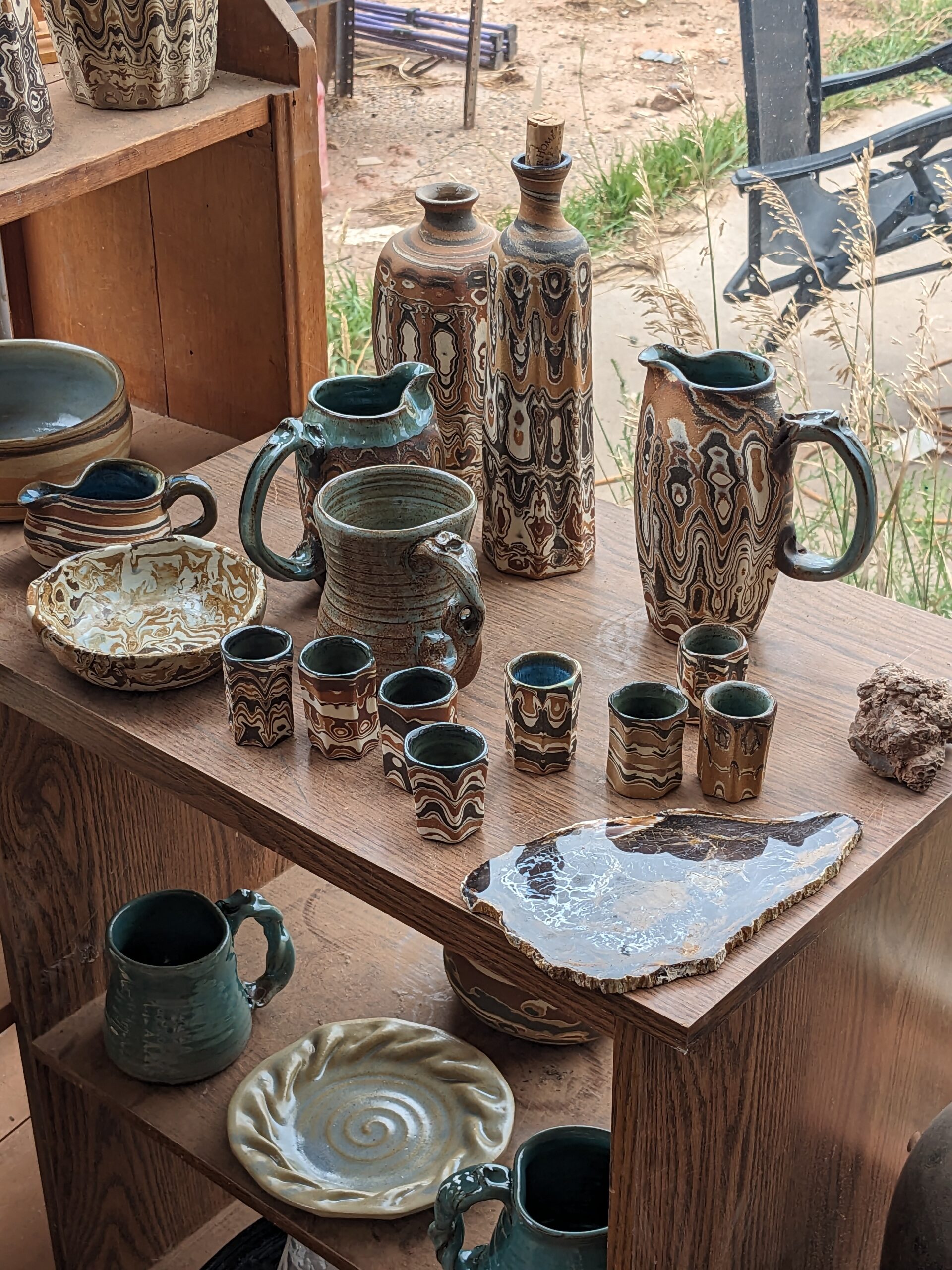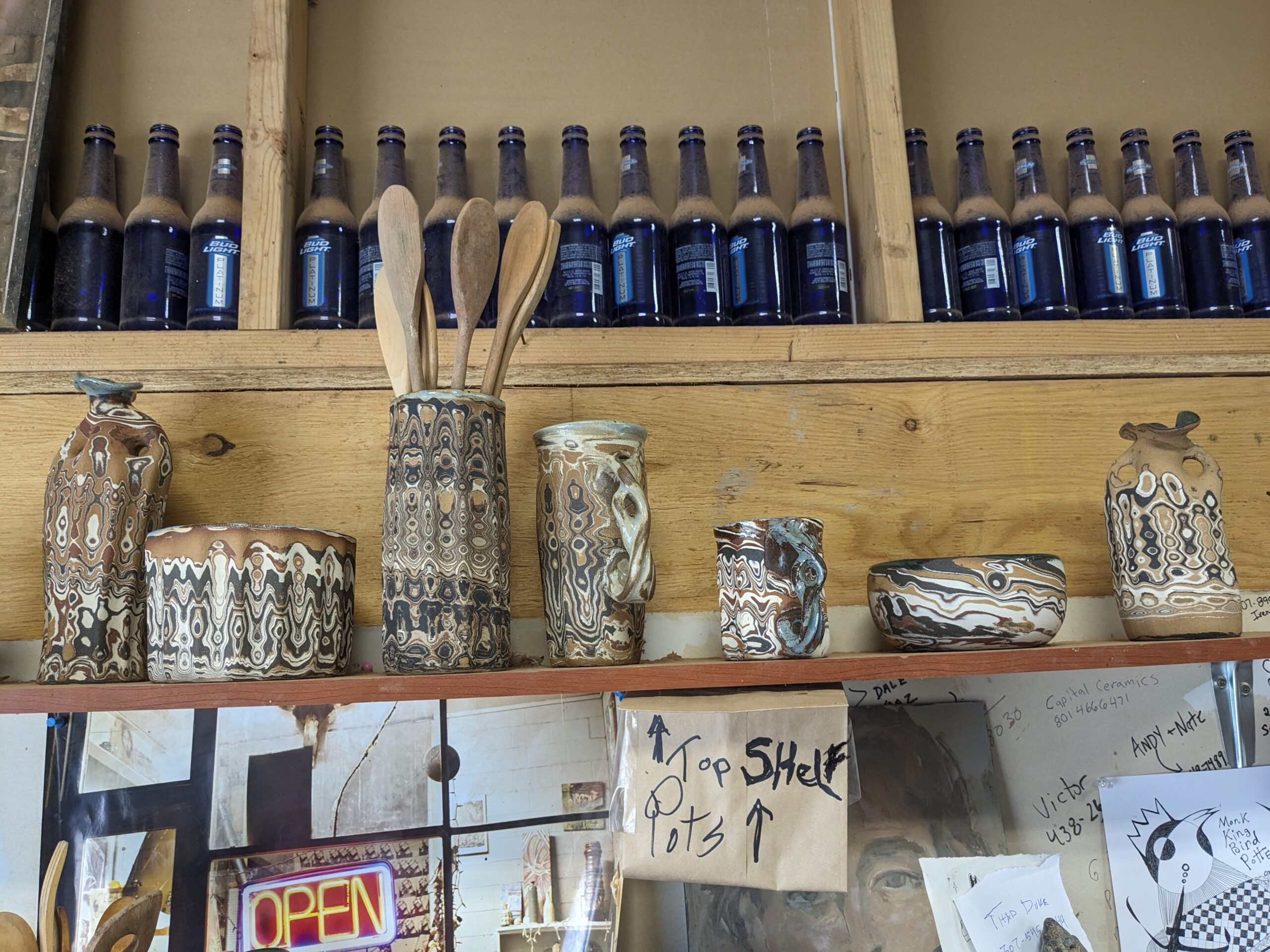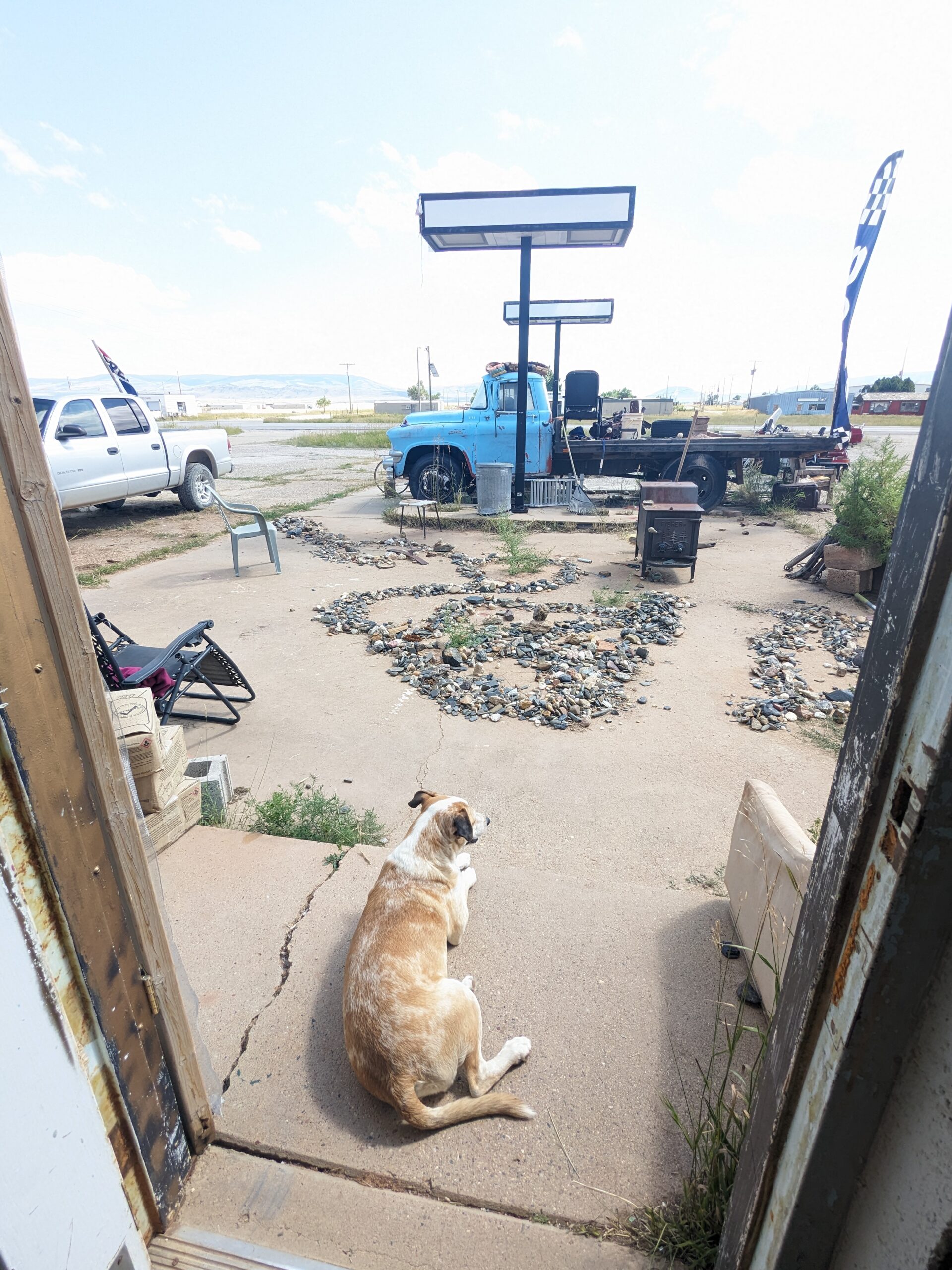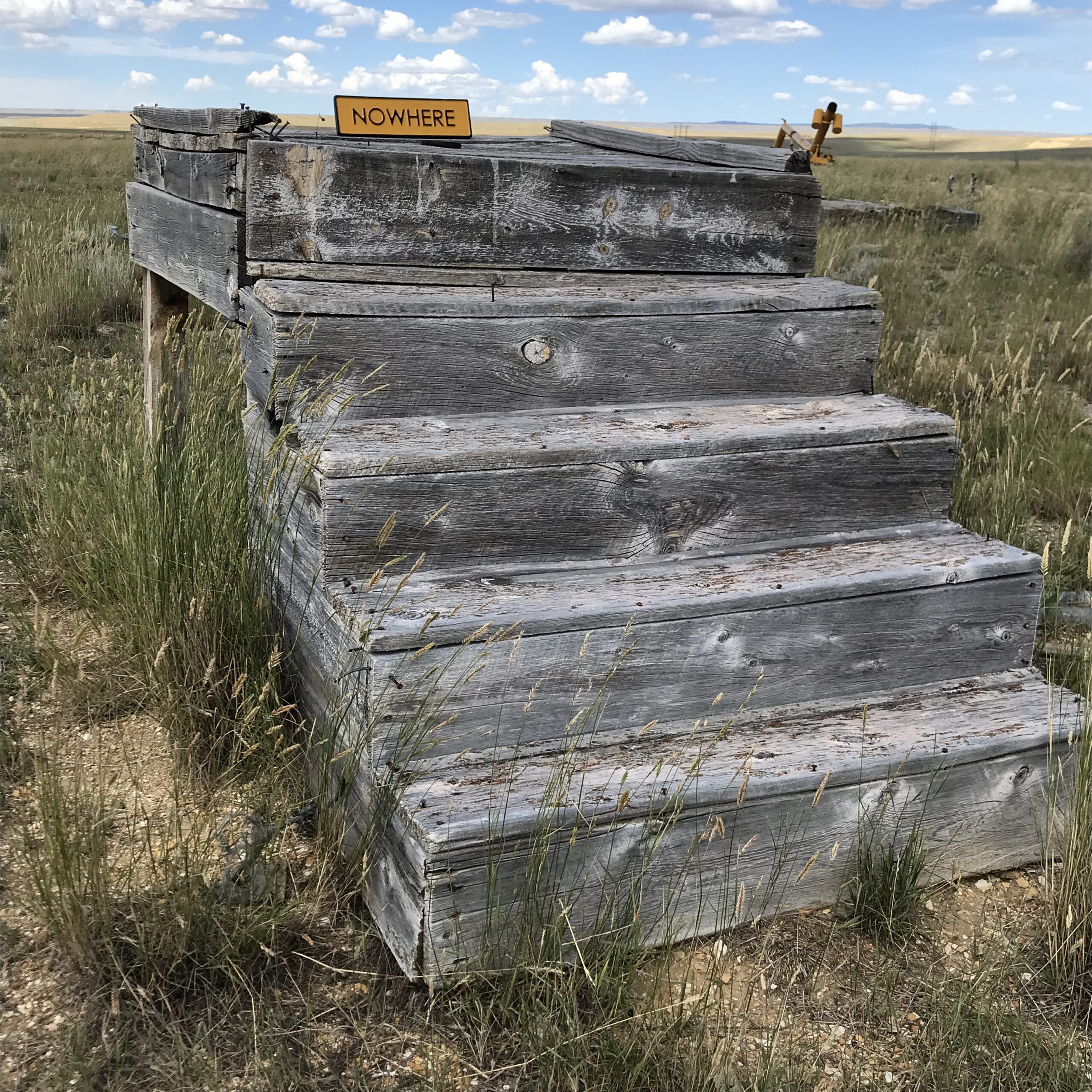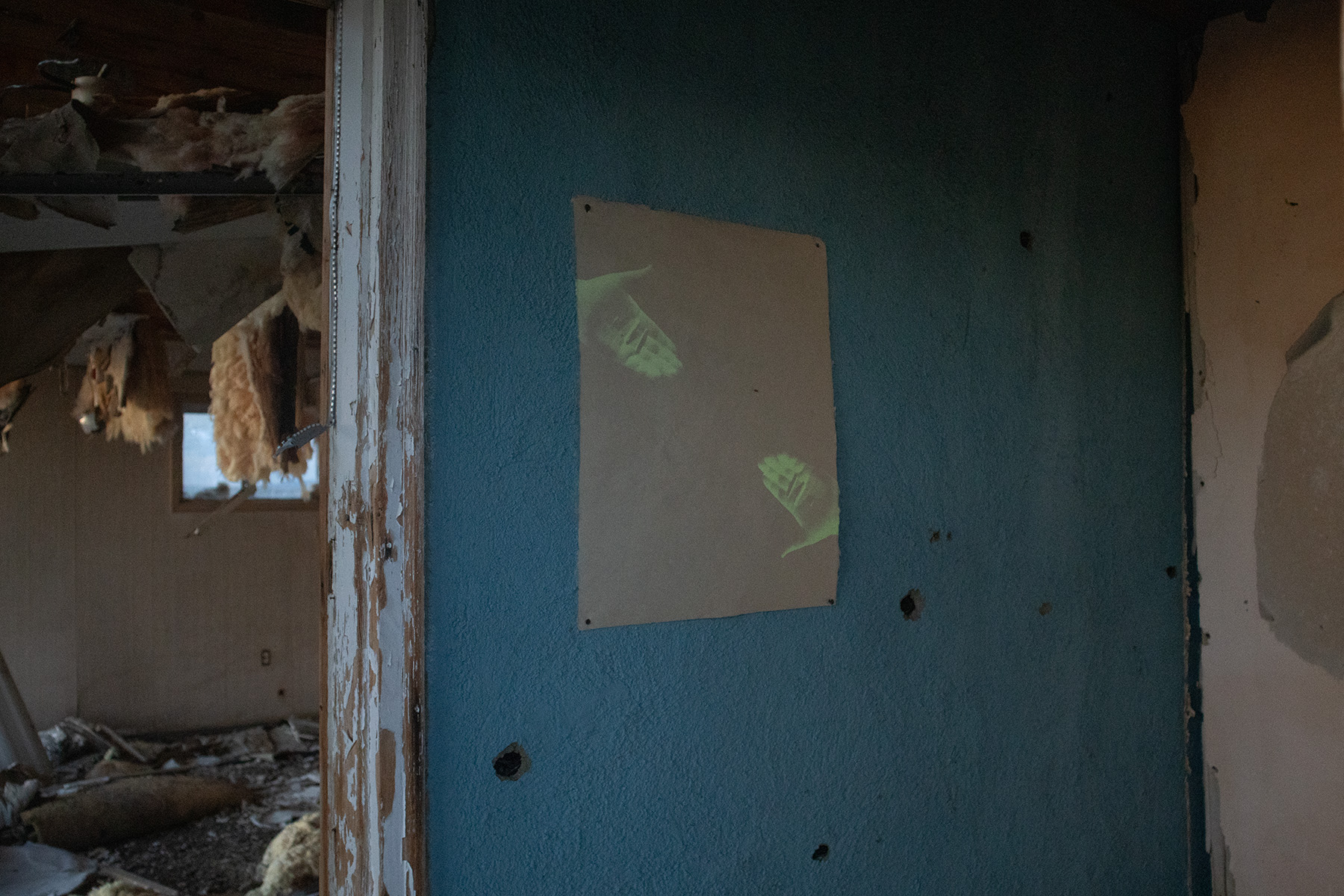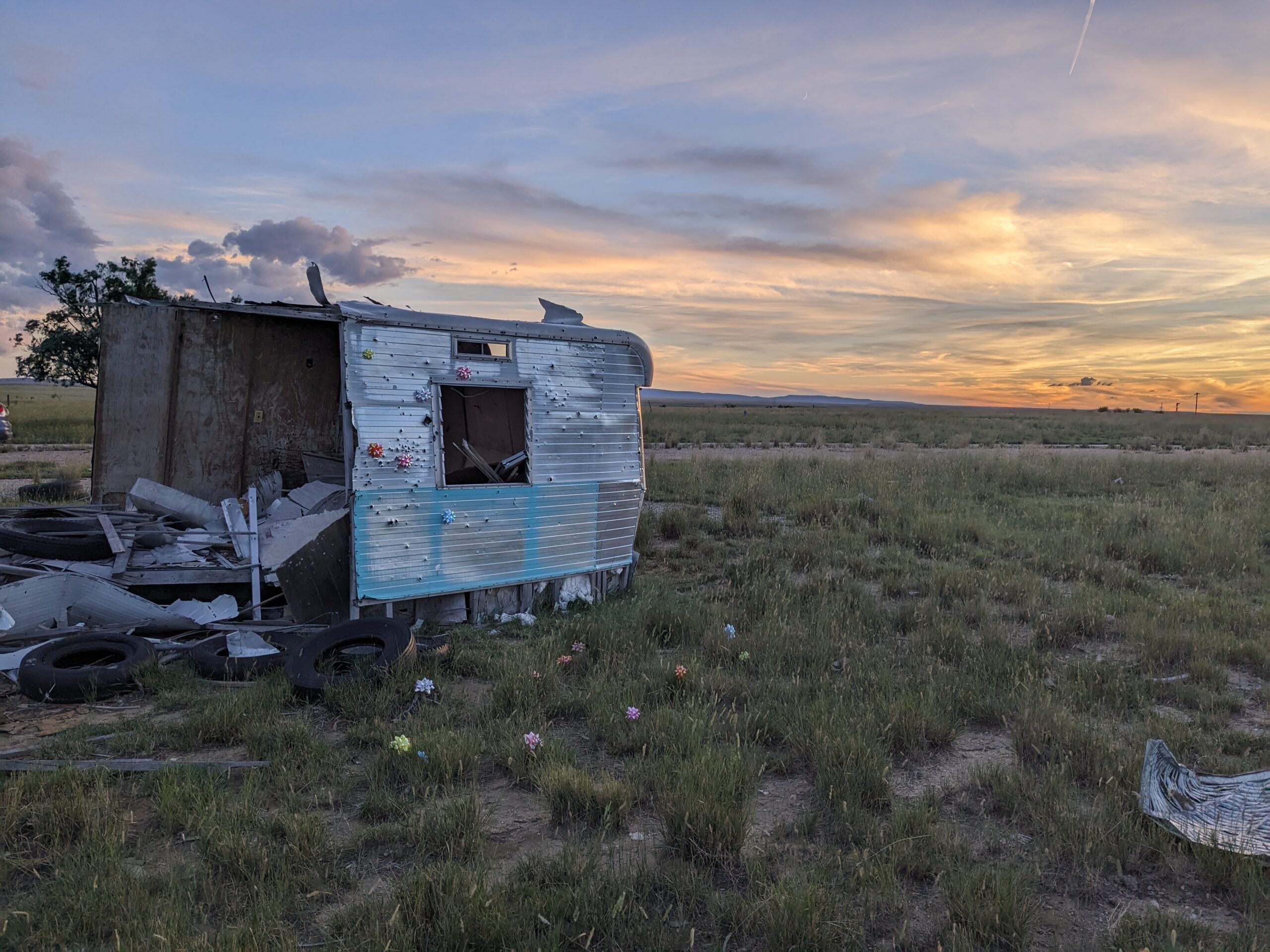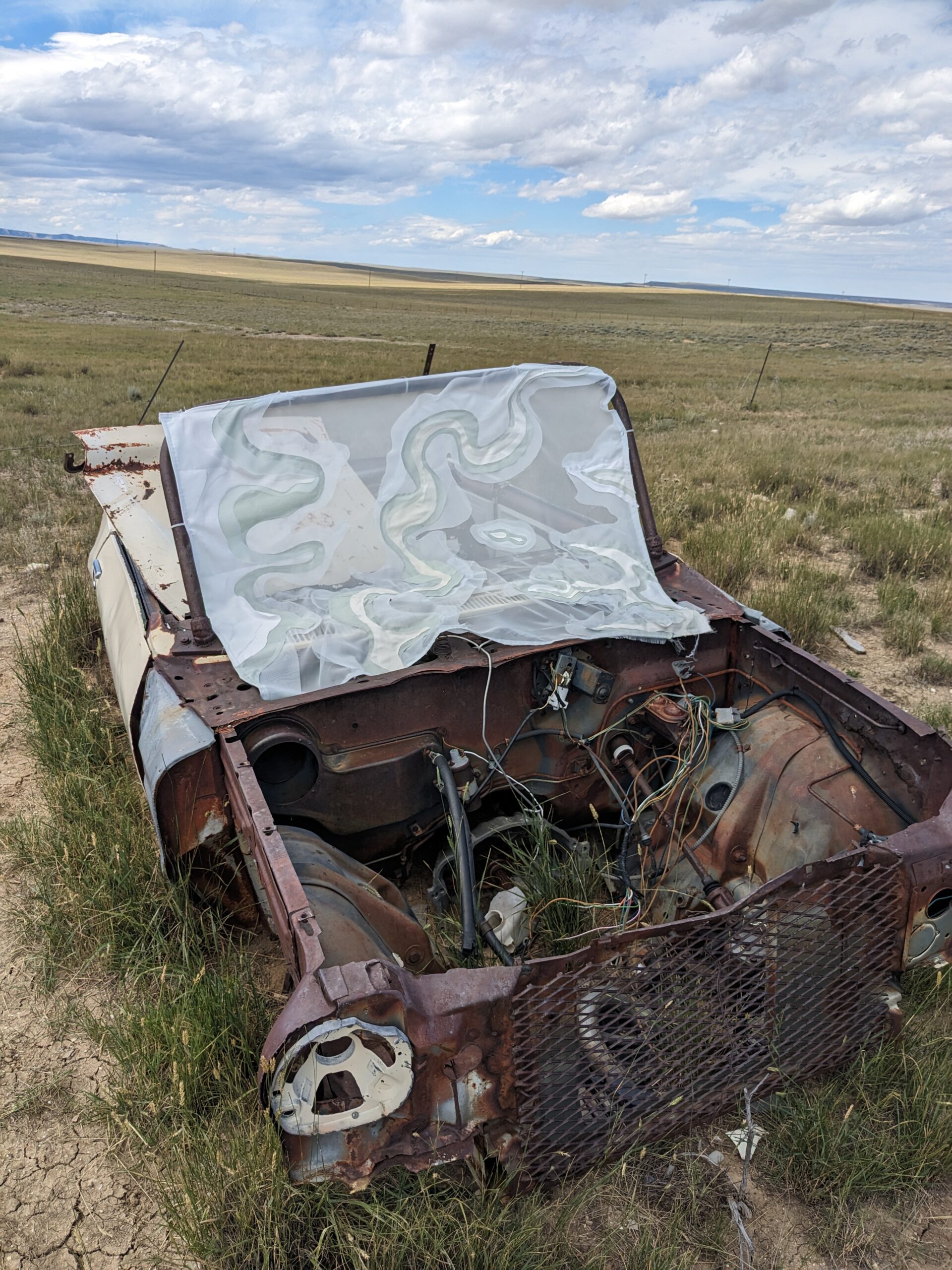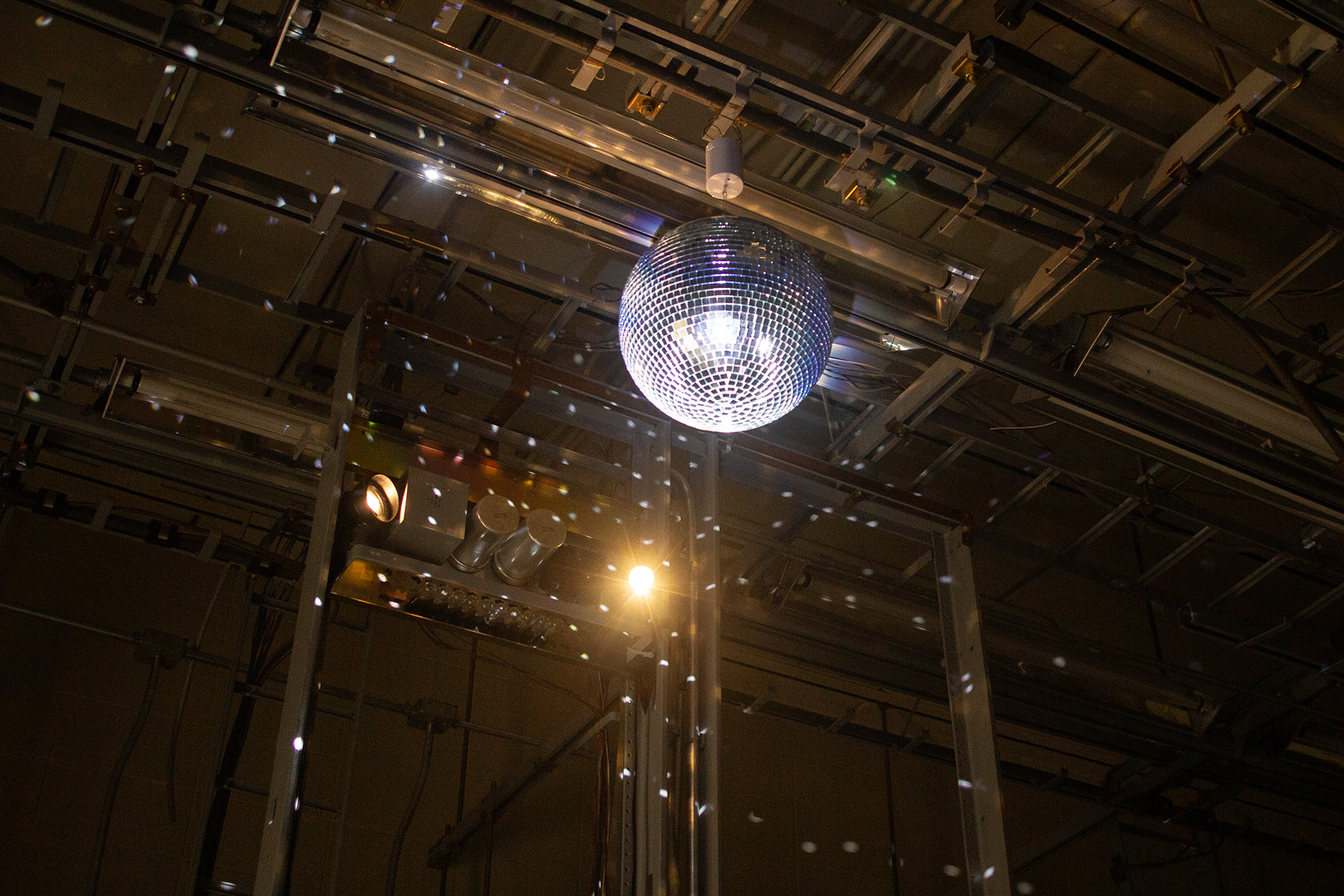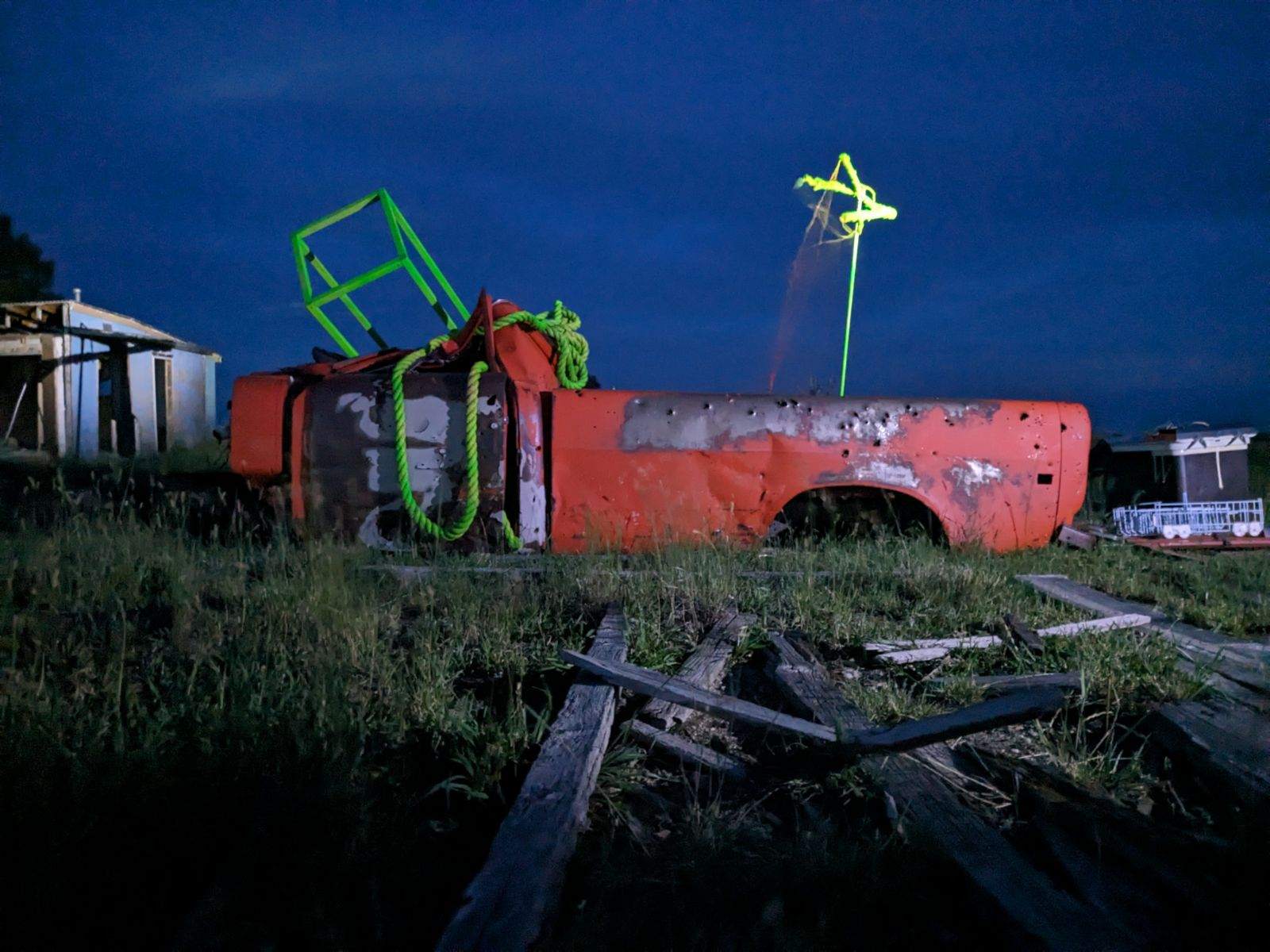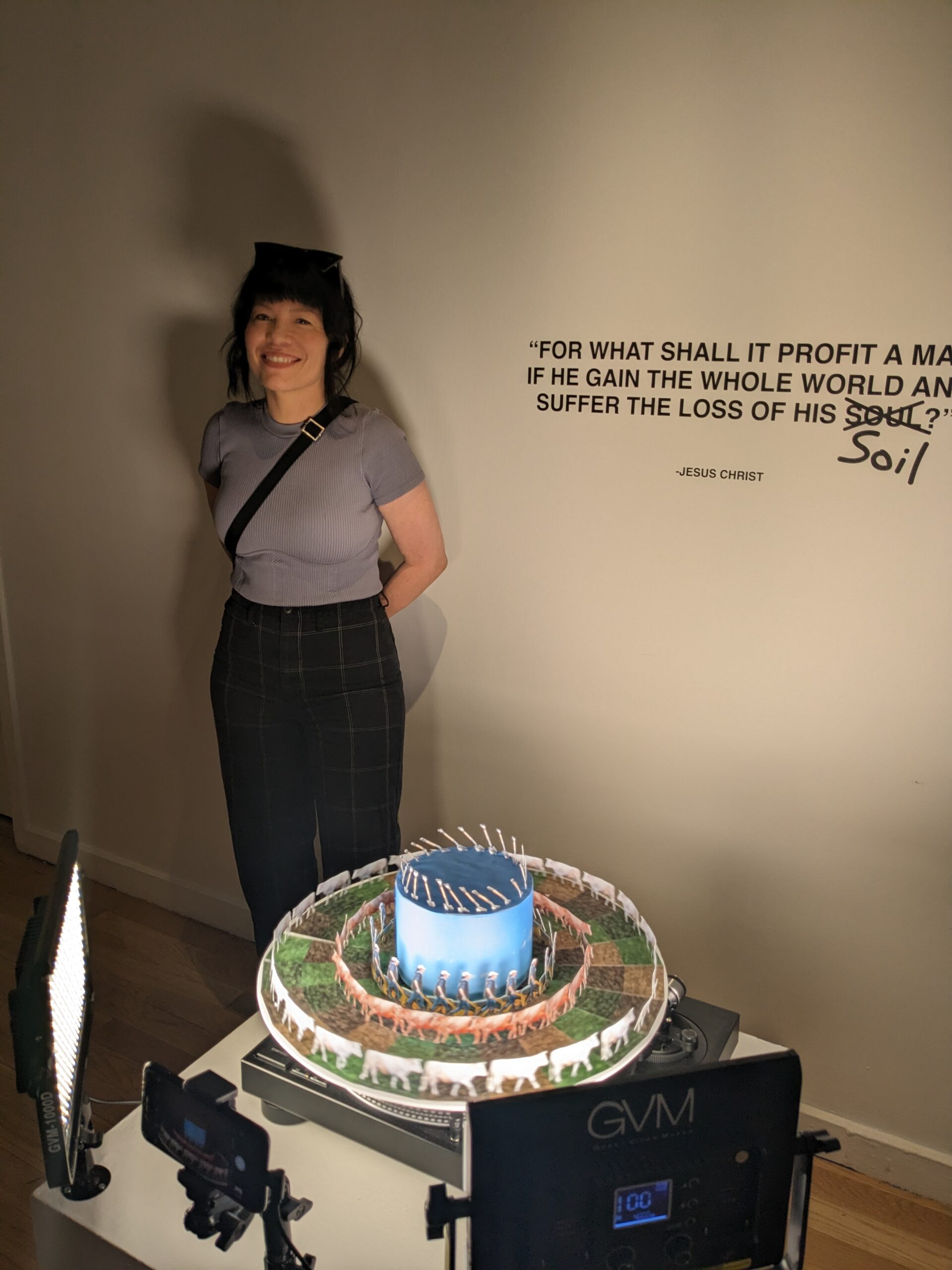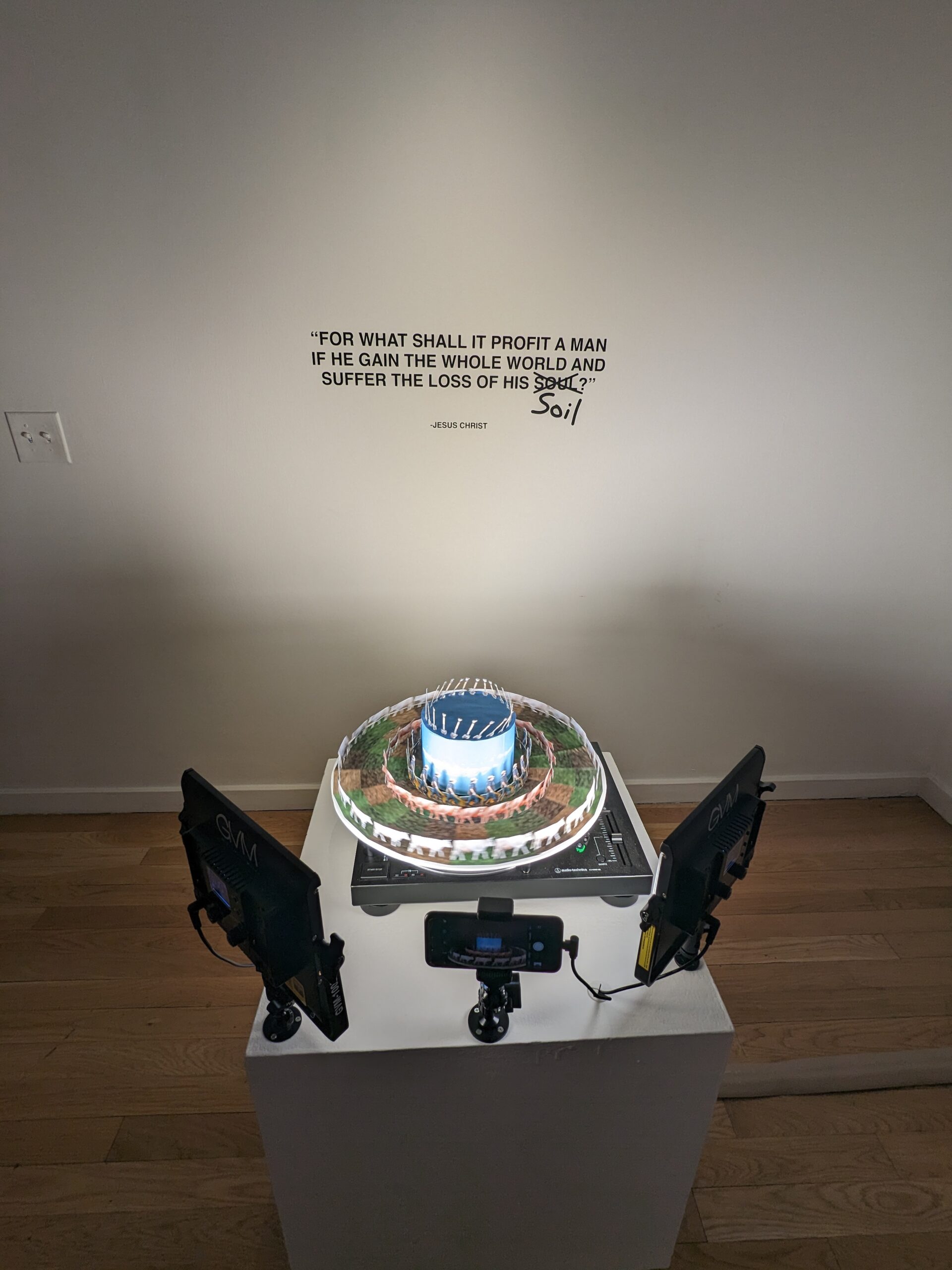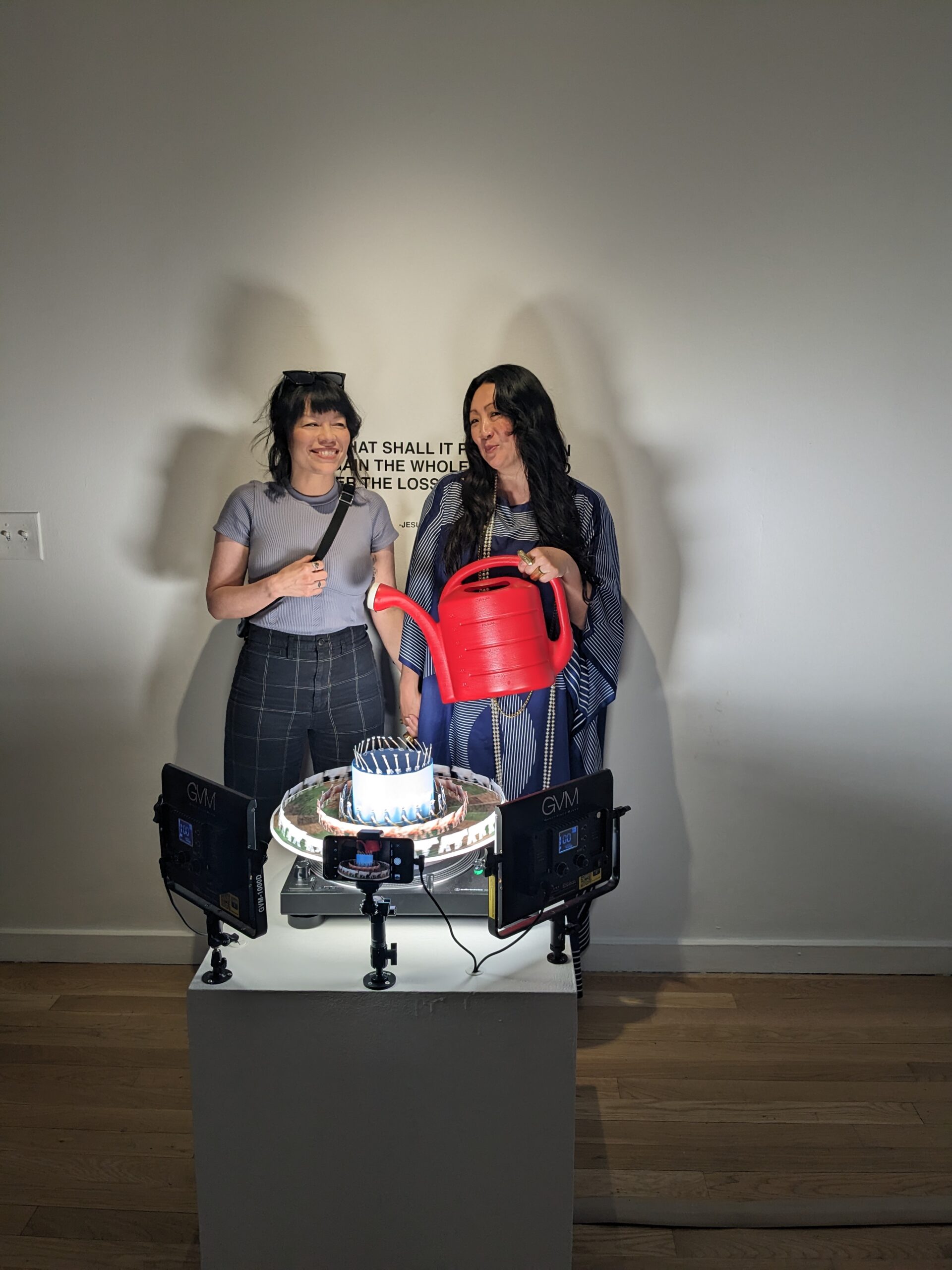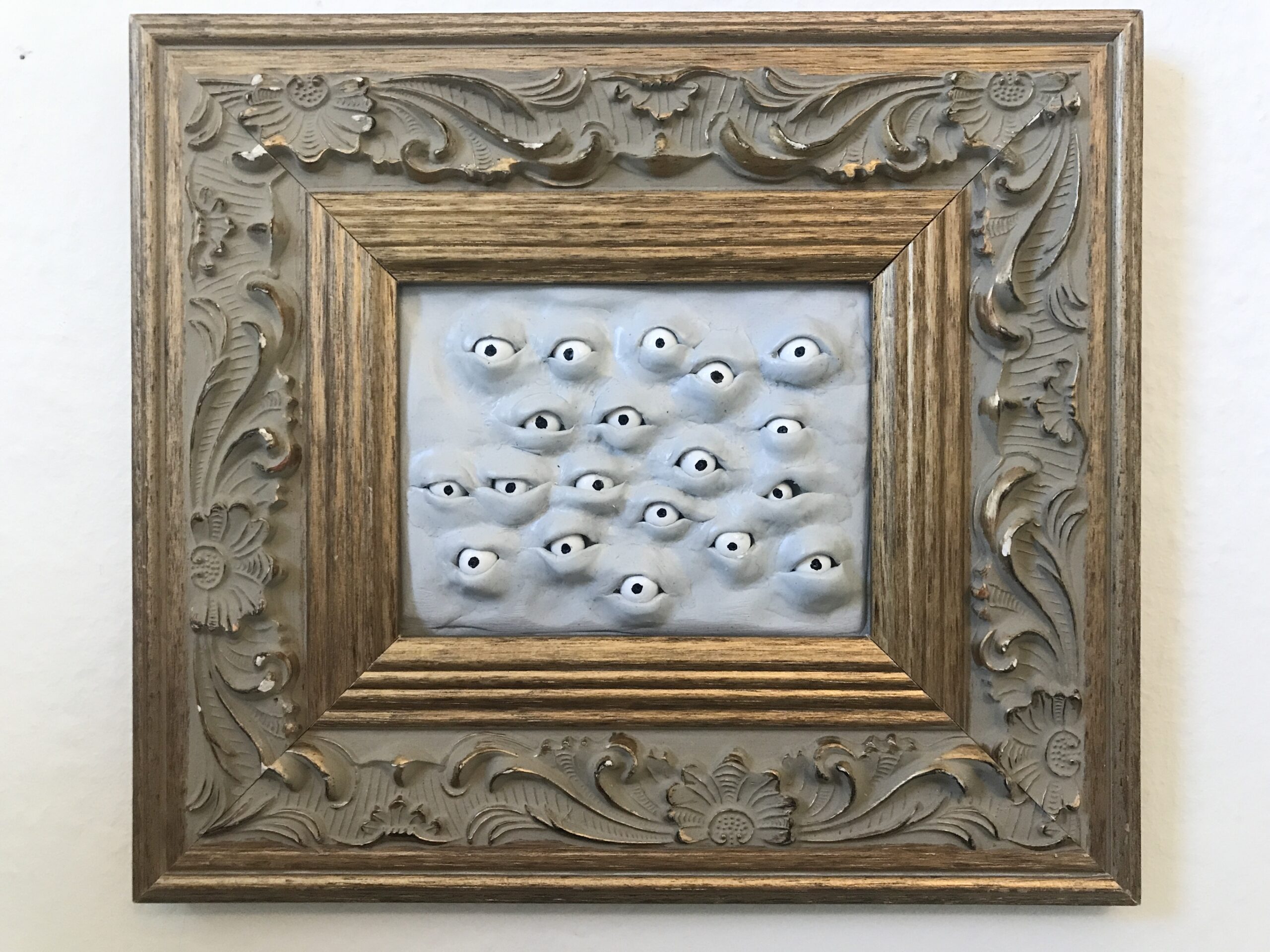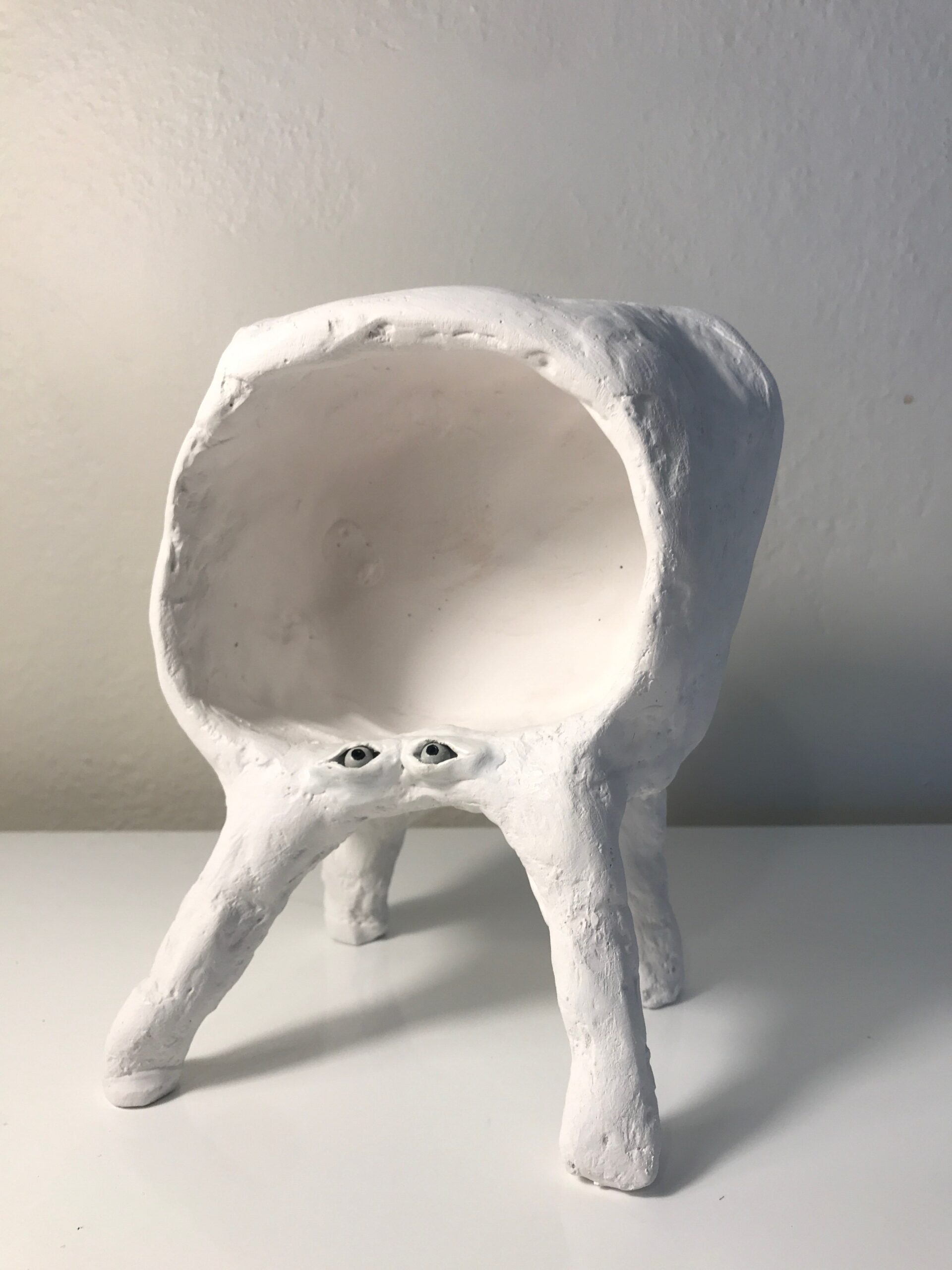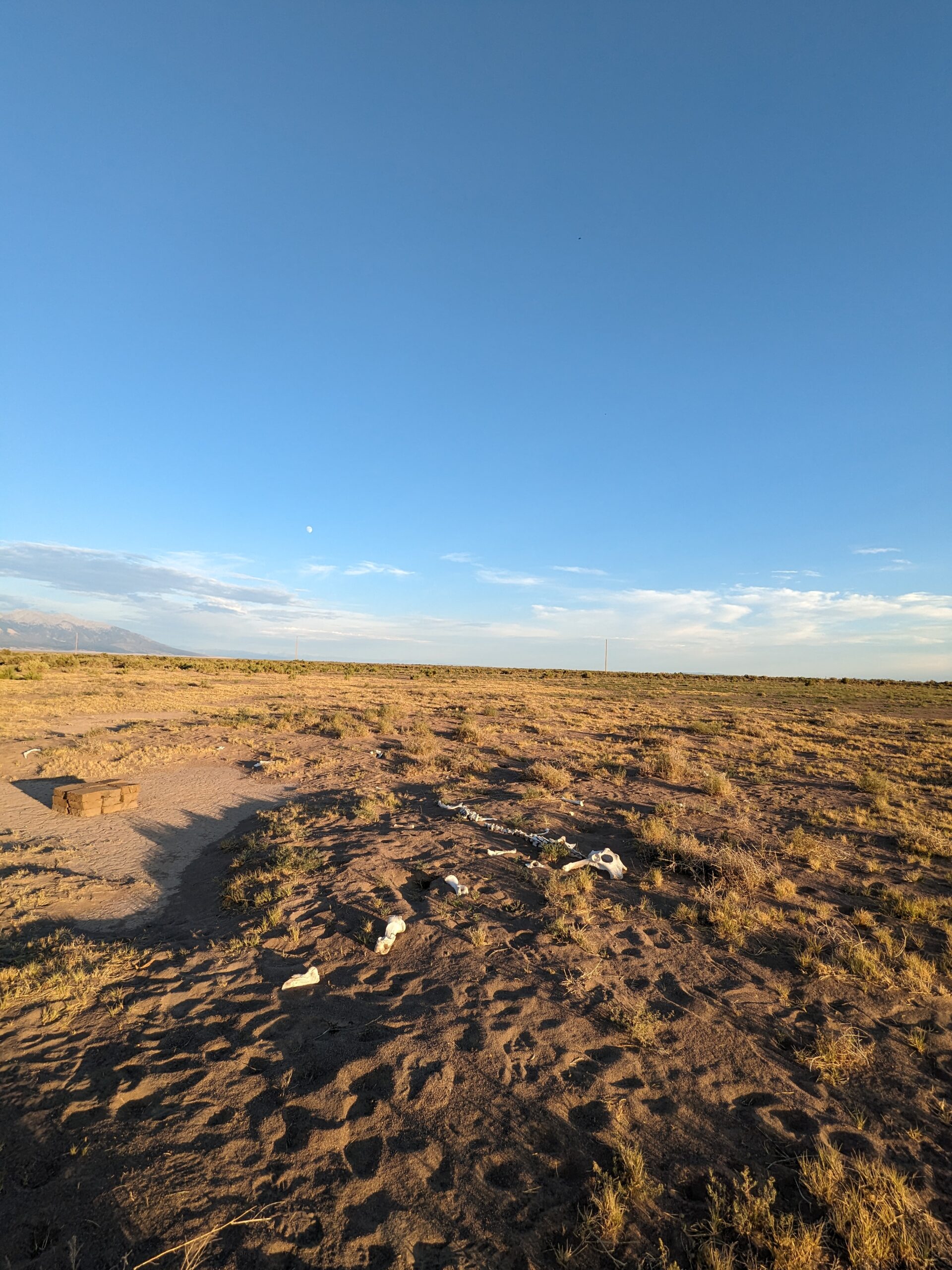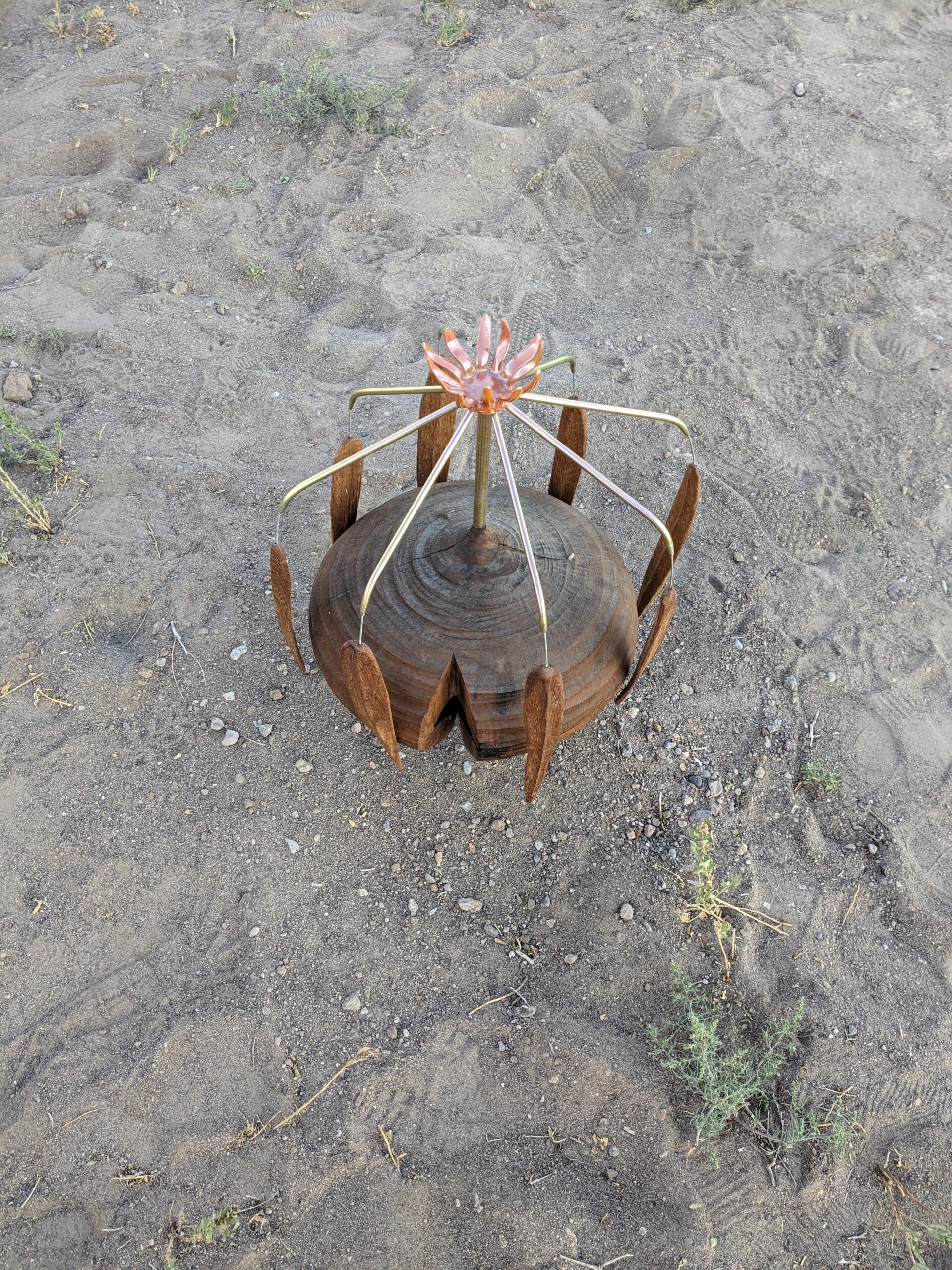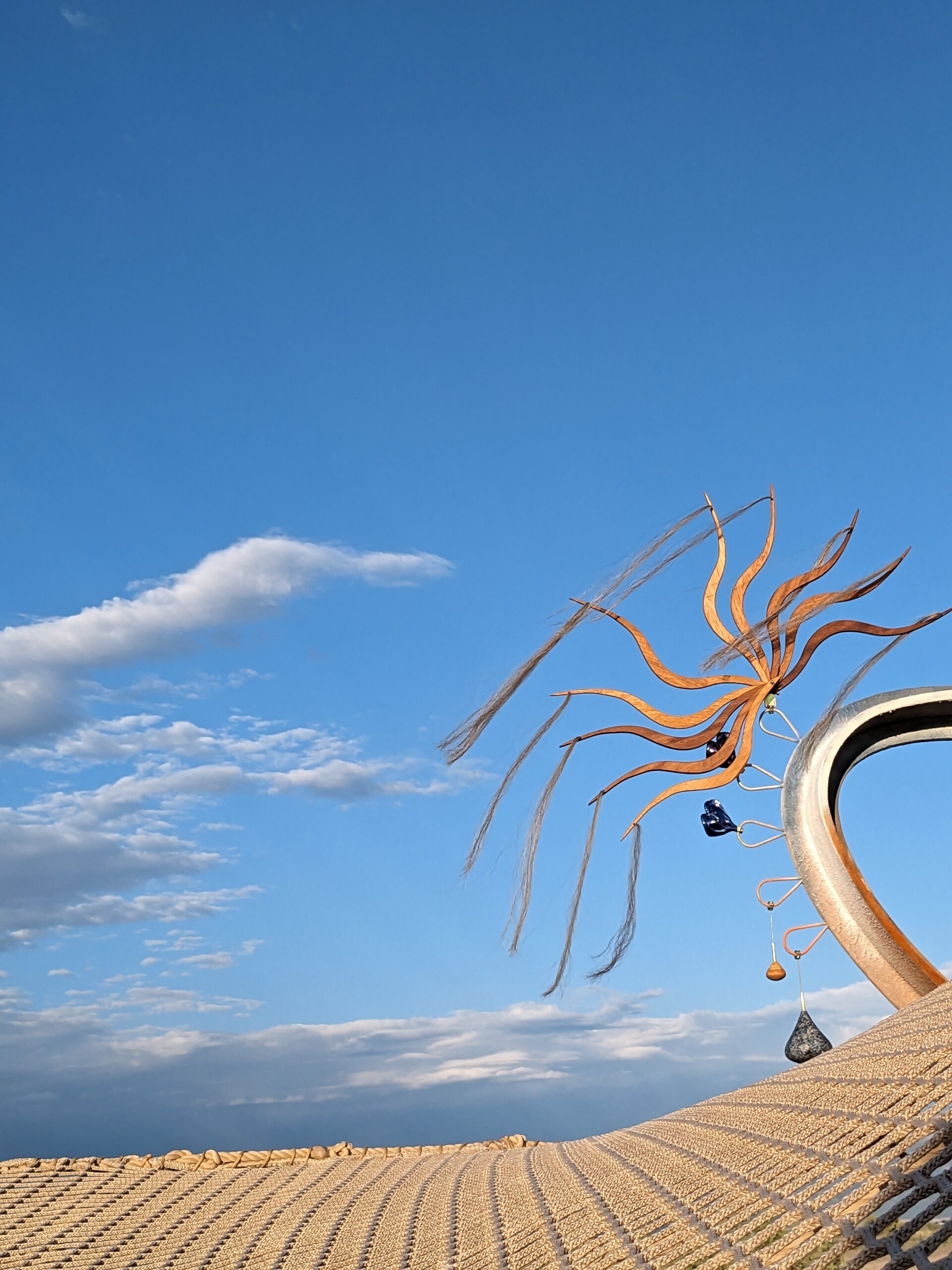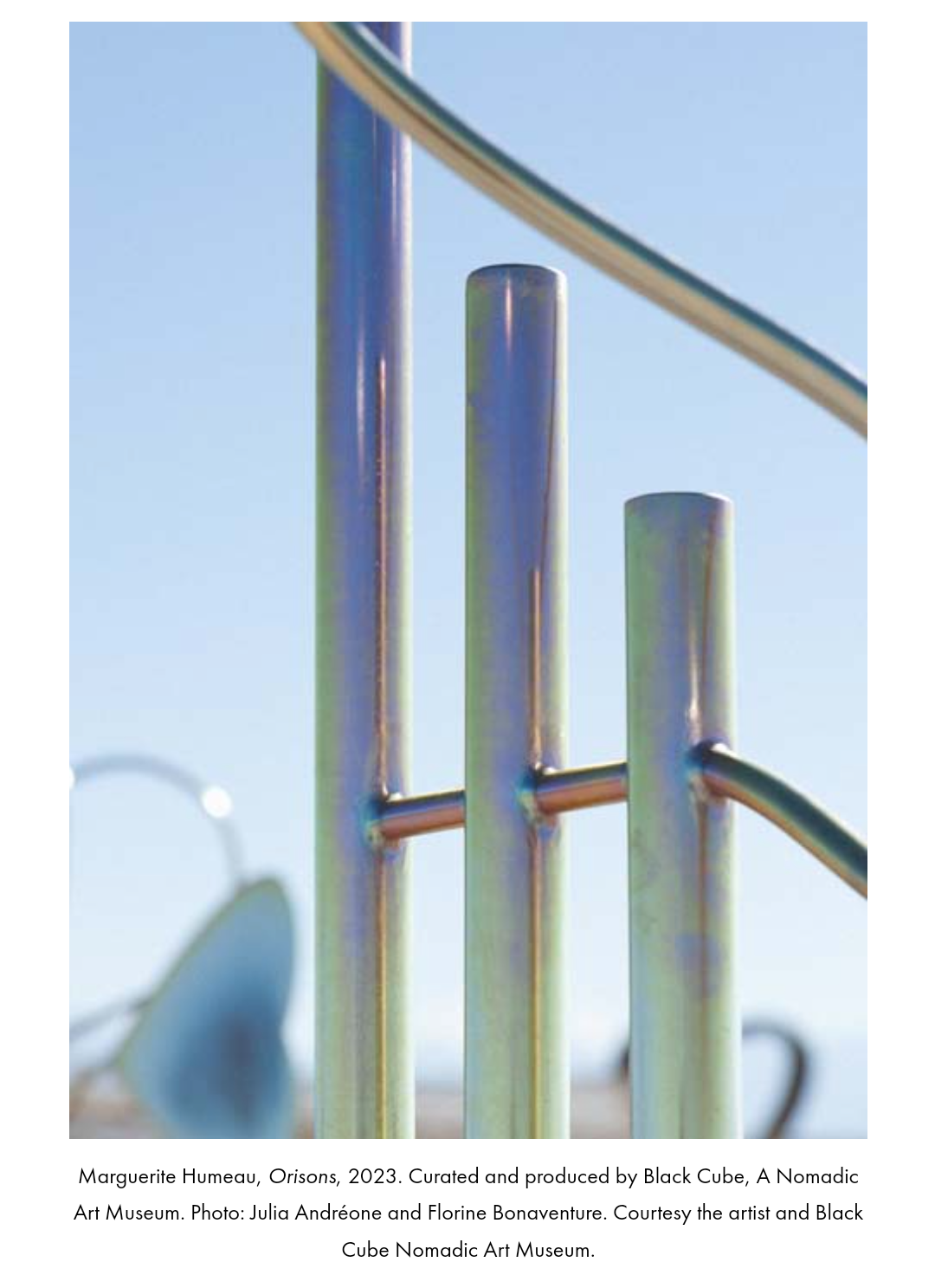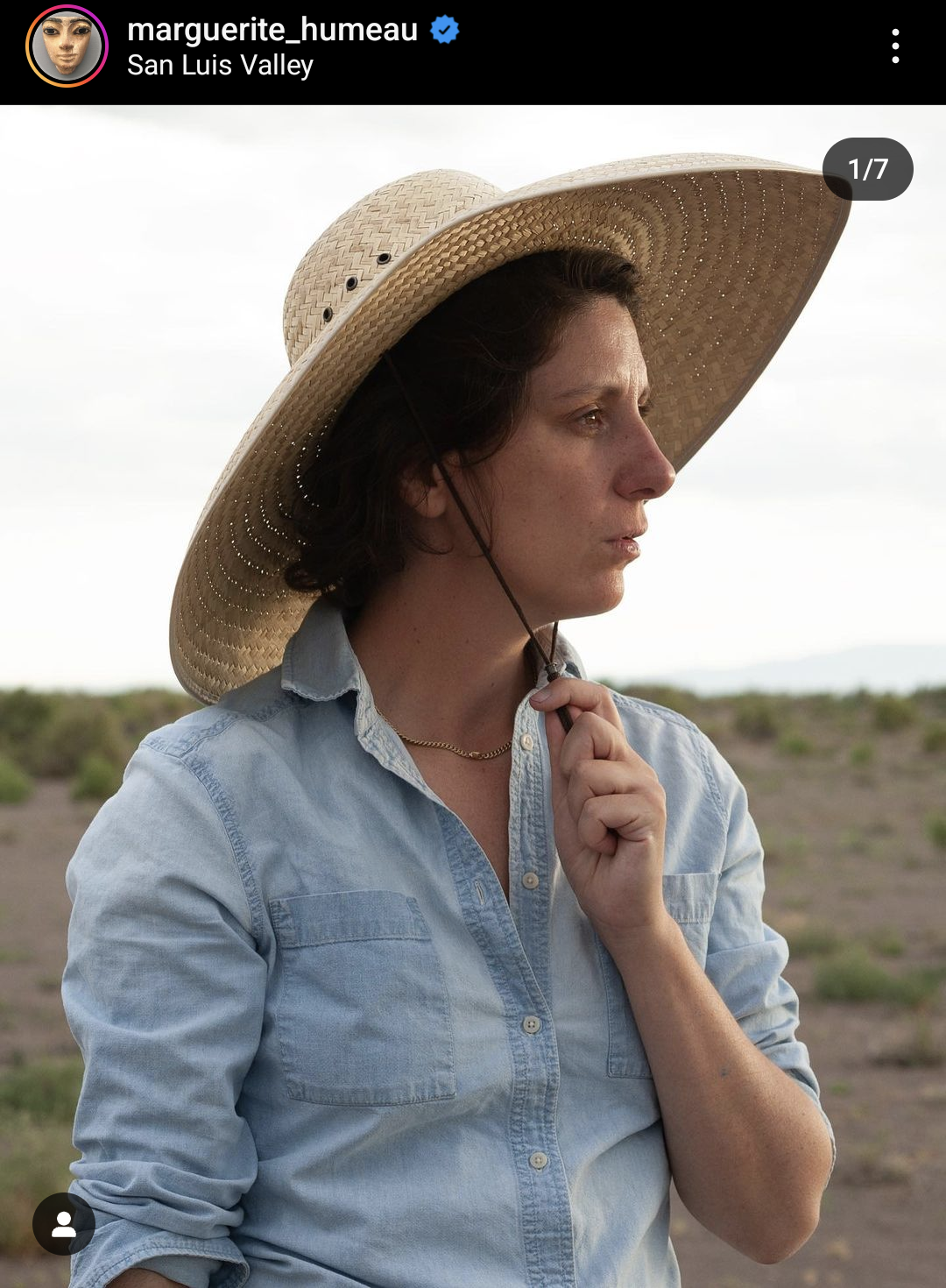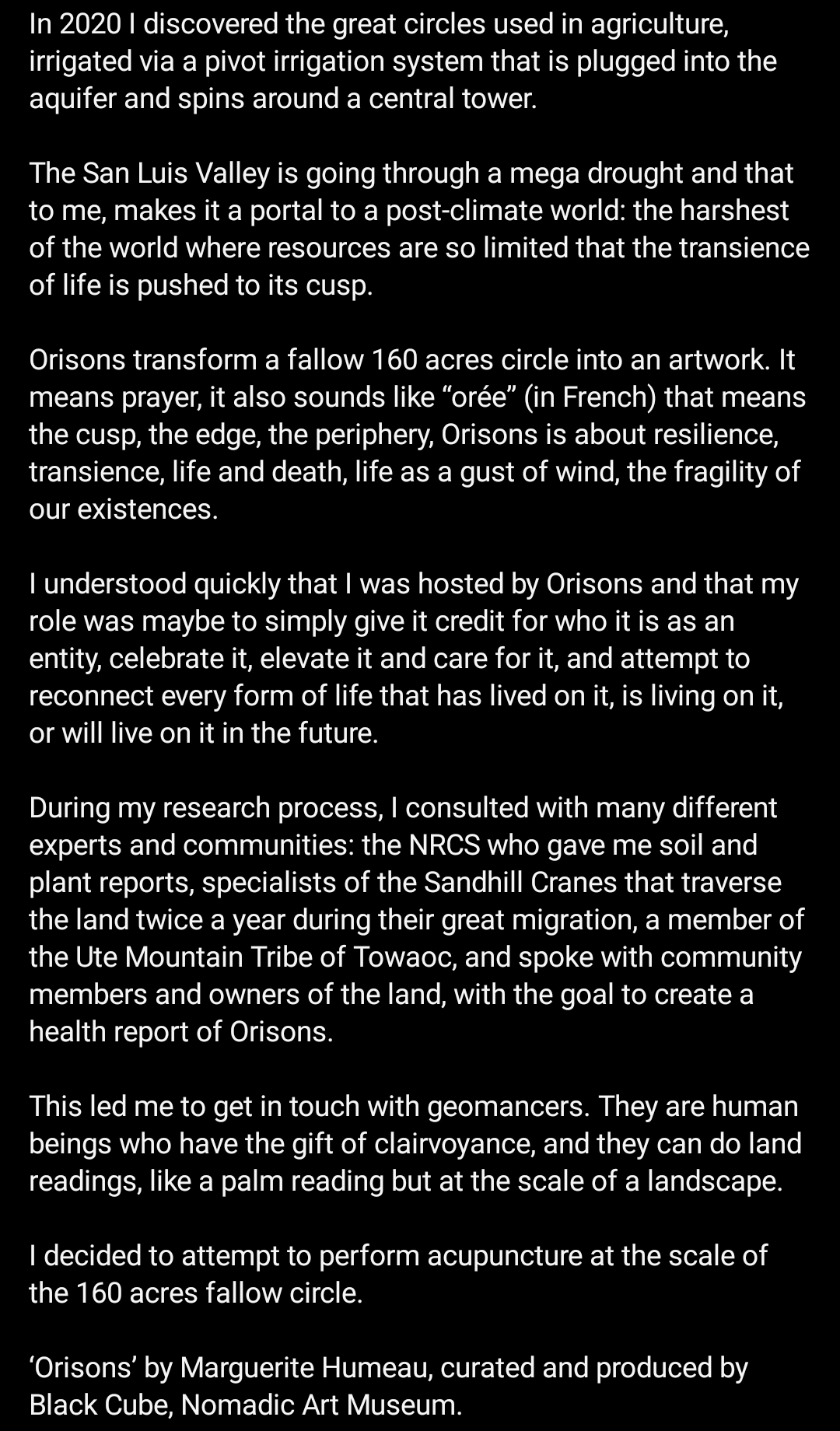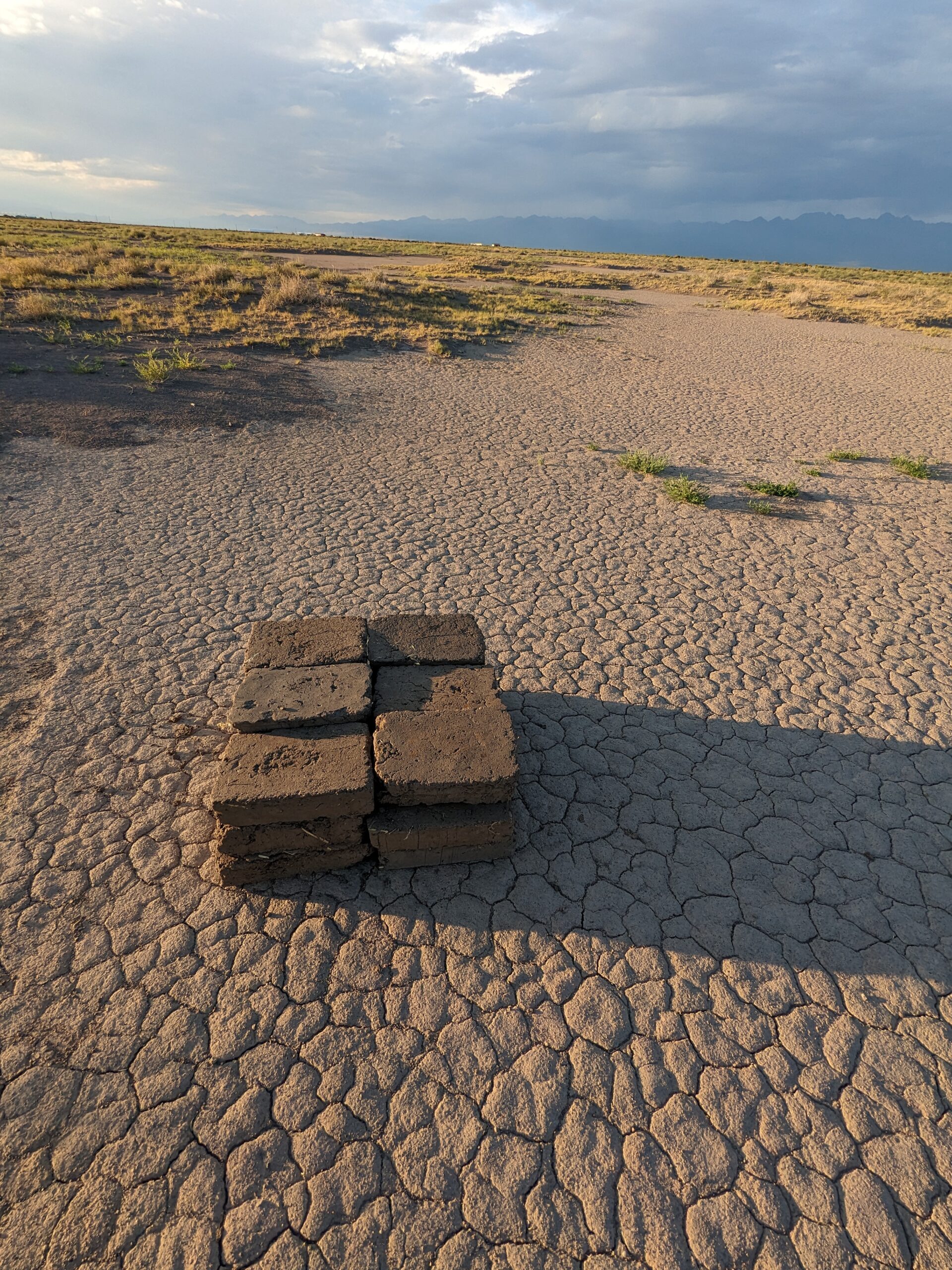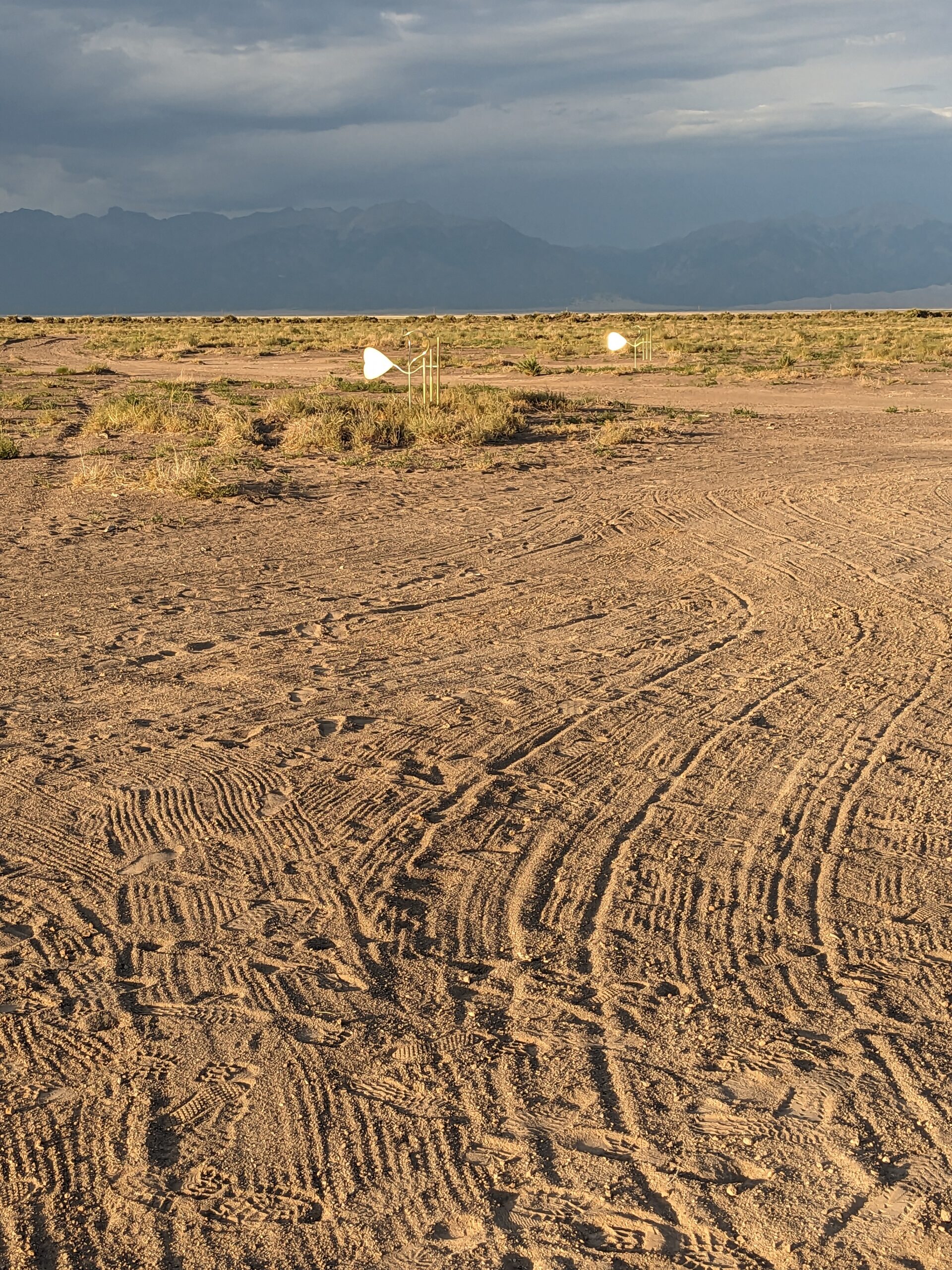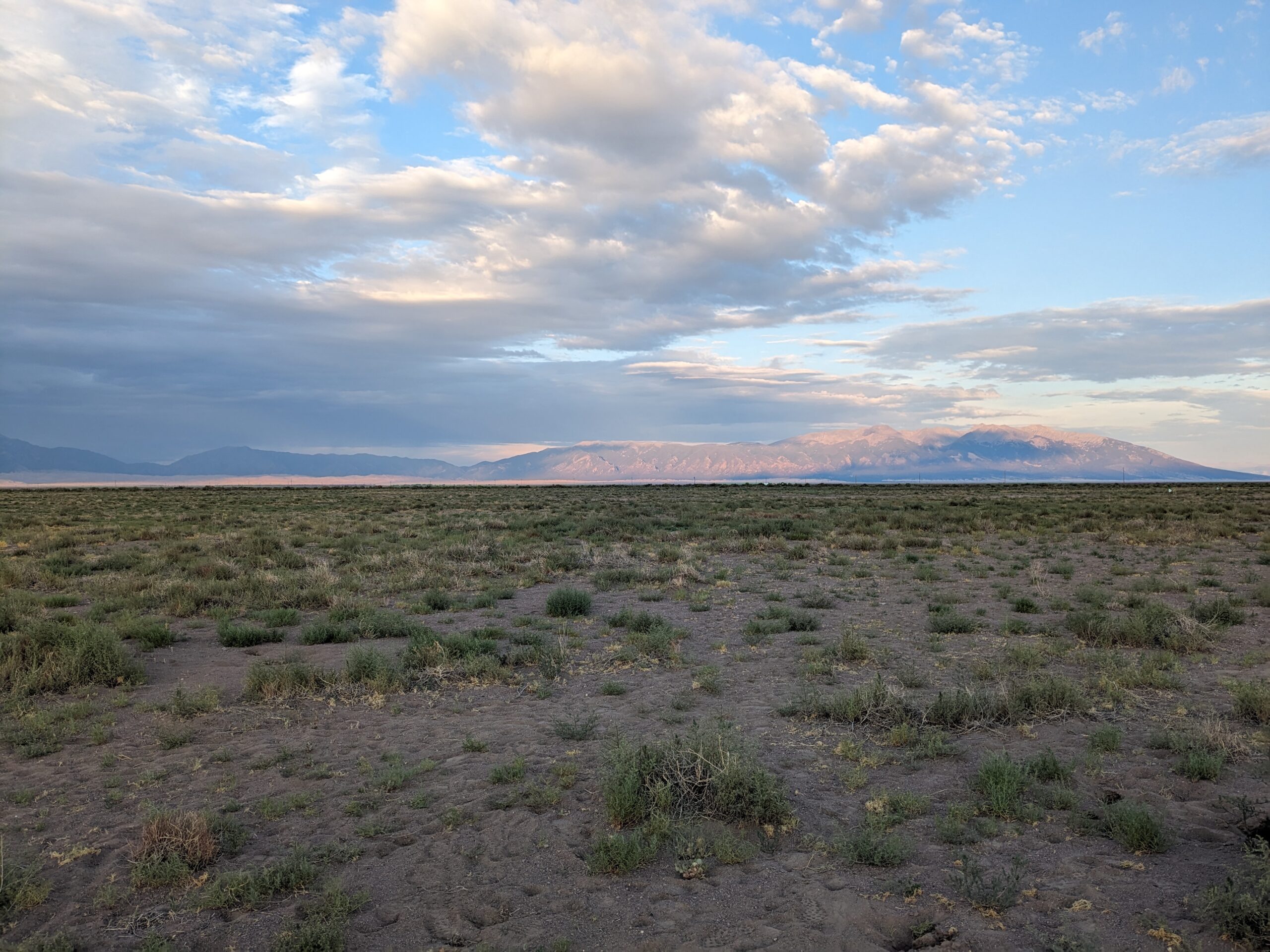A Day Well Spent With Byron Seeley of Monk King Bird Pottery

I left Lander, Wyoming at the end of August, running away from another Fremont County winter. Slowly making my way to Albuquerque, I visited Byron T. Seeley, proprietor of Monk King Bird Pottery. You can read about him, his shop, and Jeffery City in the article I wrote for Southwest Contemporary.
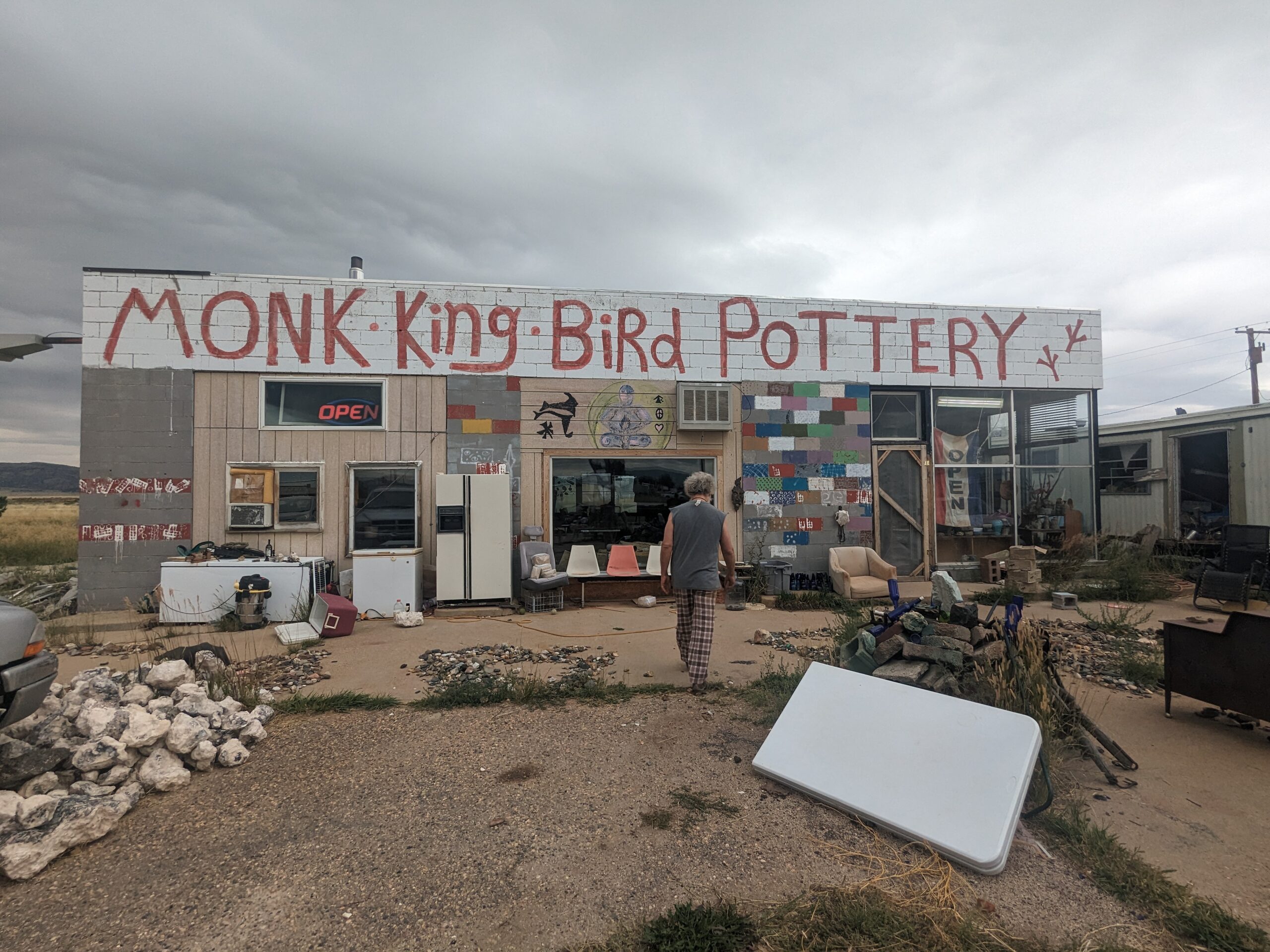
Here’s a small excerpt:
Despite local interest in him as an artist and muse, internet searches provide scant documentation of Seeley beyond some travel blog posts and YouTube videos, including one where he takes “pot shots”—shooting his work with a gun. You also won’t find much information about Jeffery City, the former uranium mining town in Central Wyoming that boomed in the 1950s and busted in the 1980s, holding onto a paltry population of twenty-two.
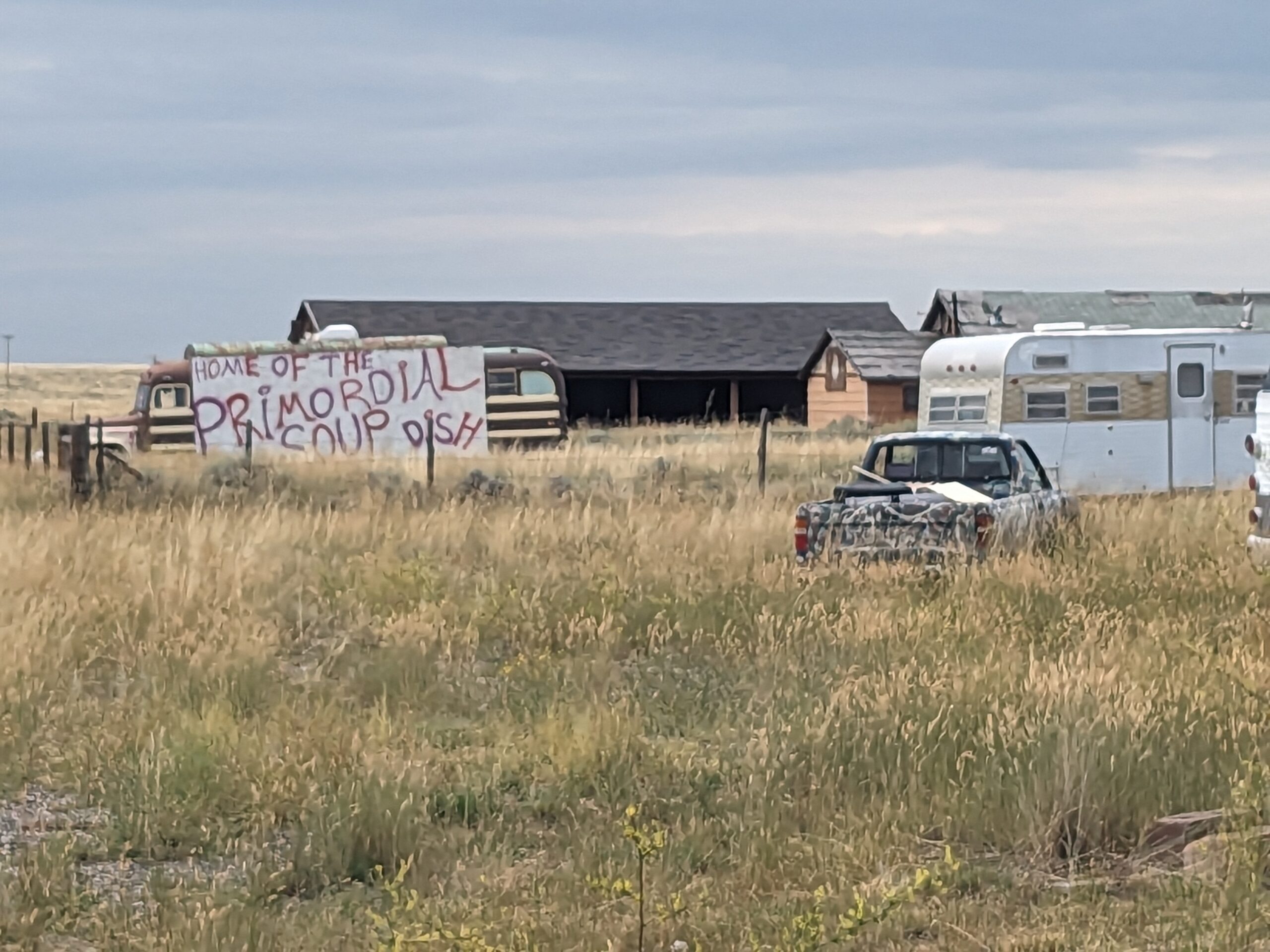
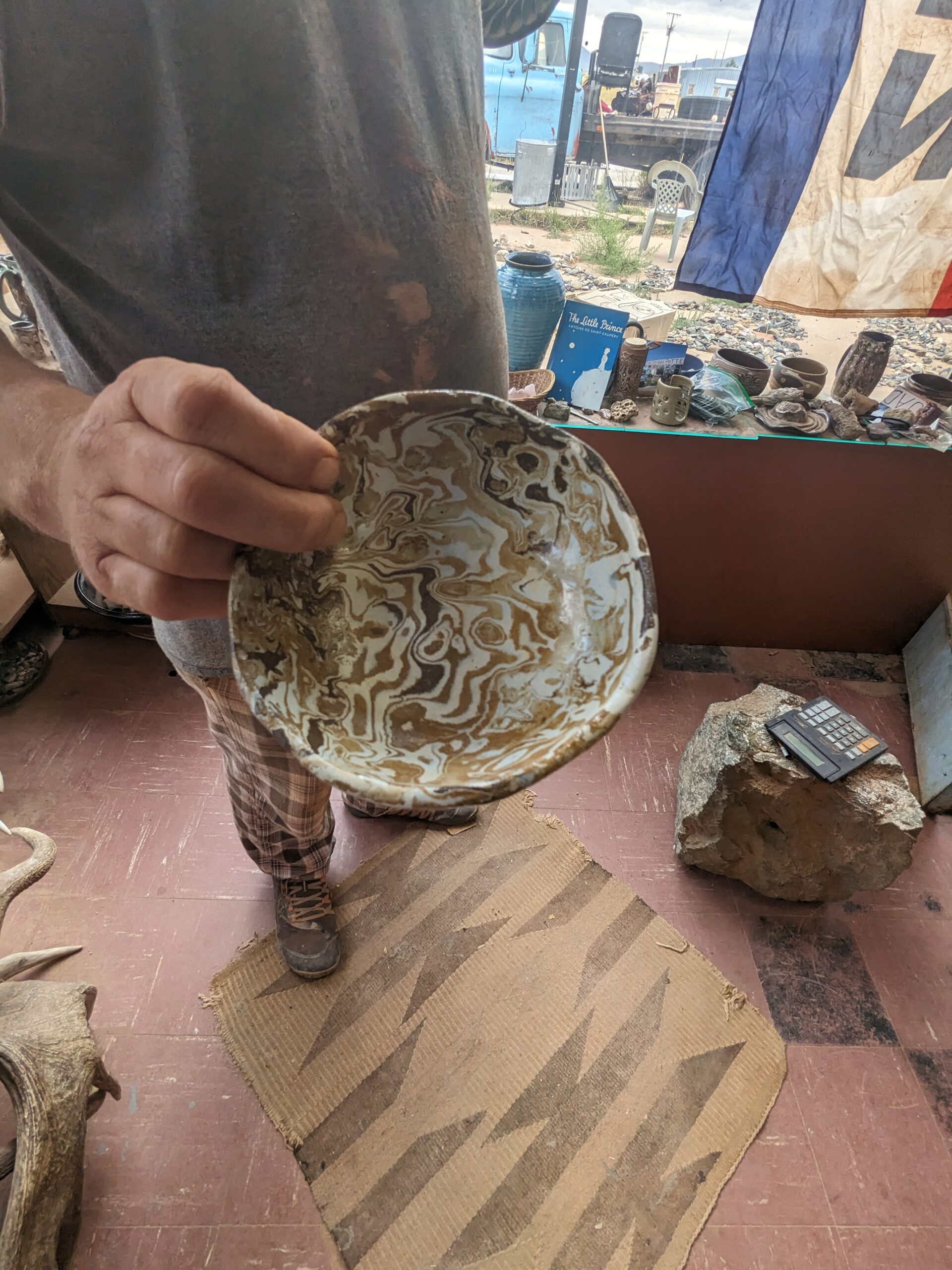
Sometimes passersby mistake Seeley’s shop for a restaurant since one of his signs reads “Home of the Primordial Soup Dish.” The dish, in fact, is a plate he makes using the same multi-clay technique as his mugs. “They’re my Moby Dick,” he jokes, admitting that he has none for sale due to the difficulty of stripping the surface layer and polishing the clay with steel wool without puncturing it.
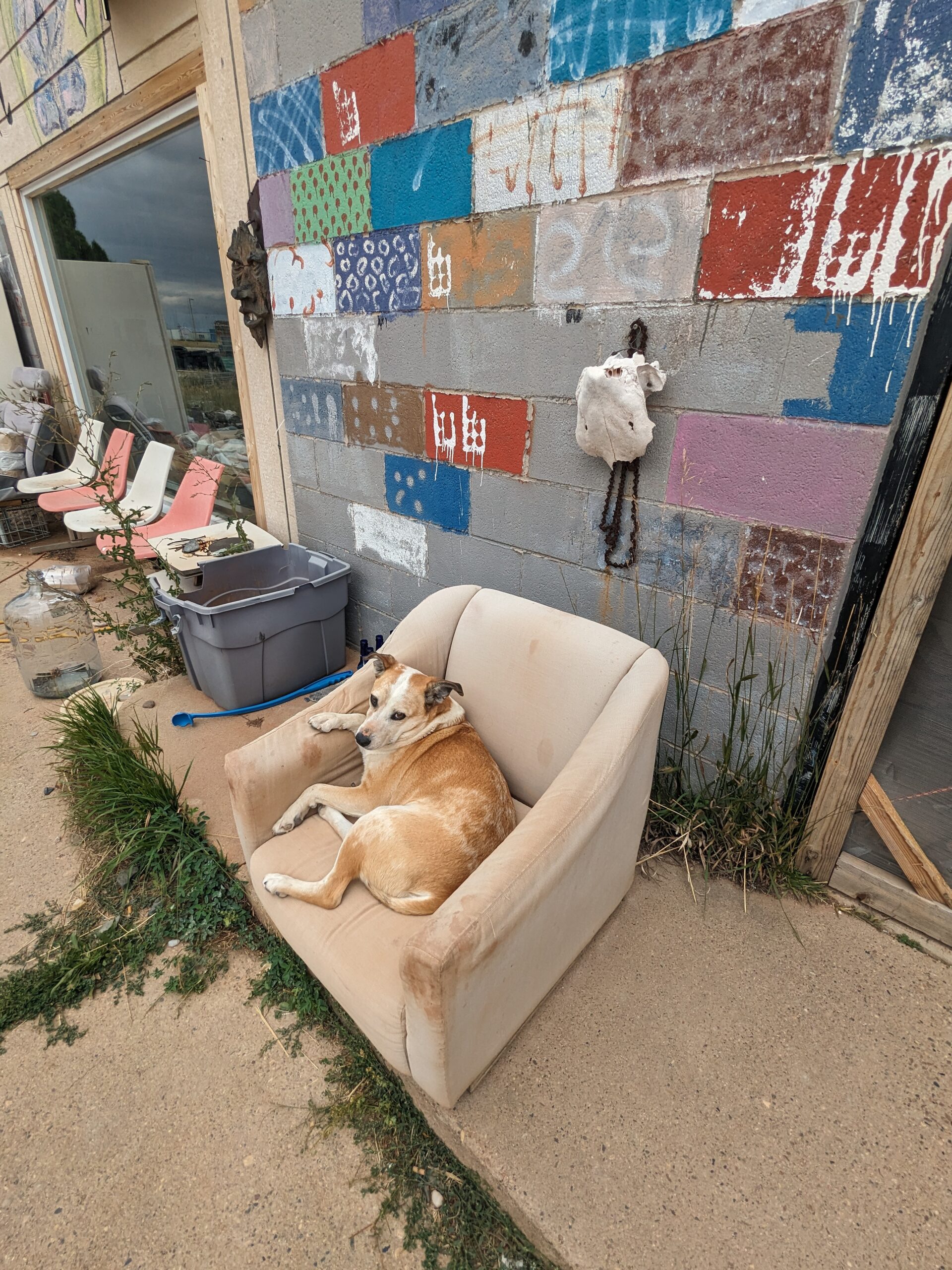
Pondering the mascots and monikers surrounding Seeley—cowboy, mad potter, jailbird, abstinent monk, and muse—he strikes me as best represented by a tumbleweed–blown into one dusty Western town after the next, attracting interest and curiosity. In a similar vein, Seeley reminds me of the Dude from The Big Lebowski (1998), which opens with the song “Tumbling Tumbleweeds,” following one of the sagebrush before introducing us to the film’s protagonist, a Gen-X hippy with a zen-like level of chill. While Seeley’s equanimity makes him guru-like, and perhaps also fails to shield him from the hyperbolic chaos and evil of the world according to the Coen brothers, he certainly doesn’t share the Dude’s lazy lack of production. And, you can’t placate him with a white Russian.

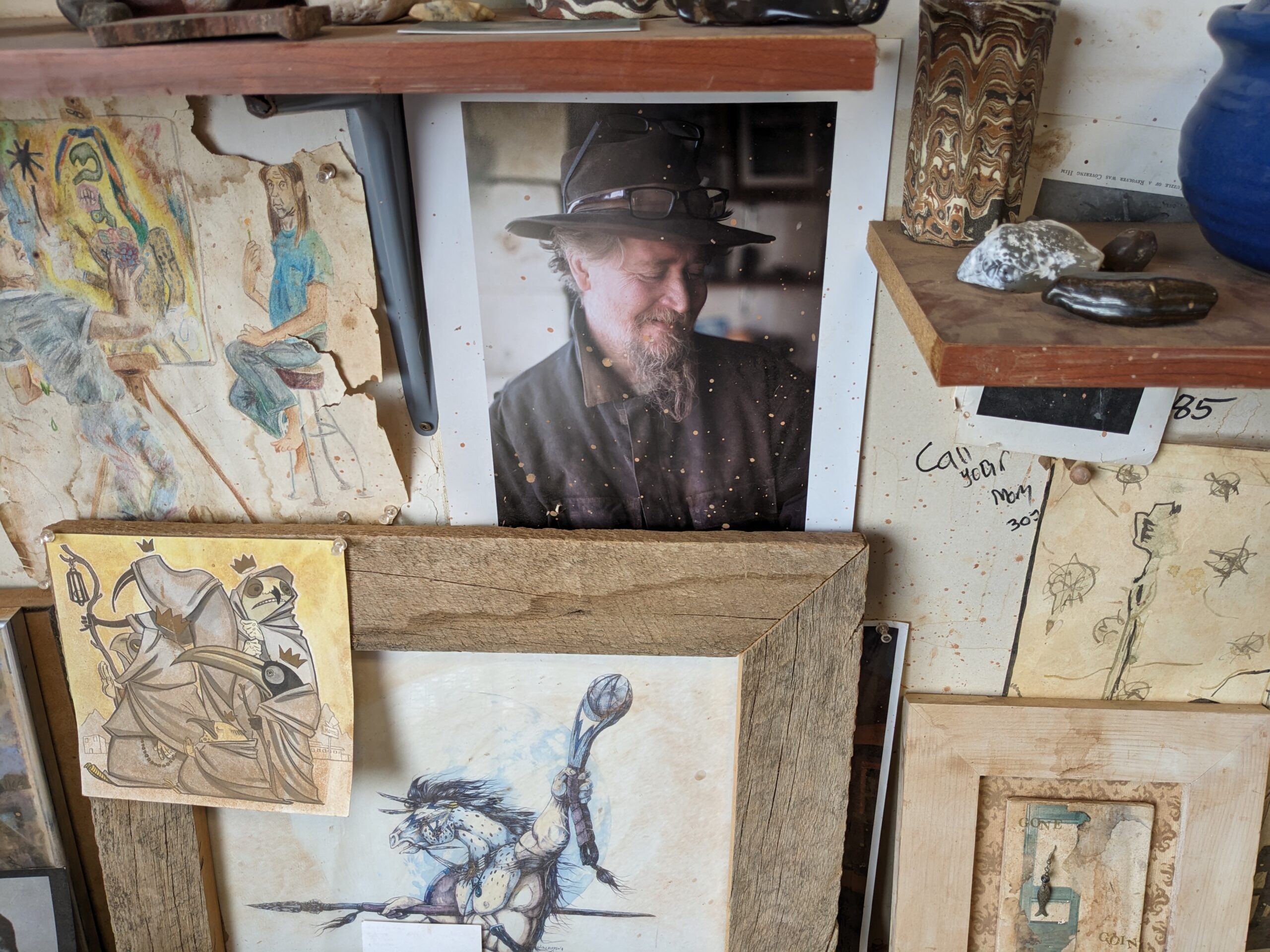
Read the full article here. Check out a full list of my publications here.
